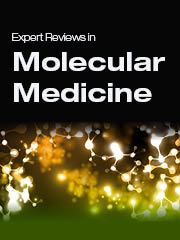Crossref Citations
This article has been cited by the following publications. This list is generated based on data provided by
Crossref.
Schwartz, Michal
2010.
“Tissue-repairing” blood-derived macrophages are essential for healing of the injured spinal cord: From skin-activated macrophages to infiltrating blood-derived cells?.
Brain, Behavior, and Immunity,
Vol. 24,
Issue. 7,
p.
1054.
Llorens, Franc
Gil, Vanessa
and
del Río, José Antonio
2011.
Emerging functions of myelin‐associated proteins during development, neuronal plasticity, and neurodegeneration.
The FASEB Journal,
Vol. 25,
Issue. 2,
p.
463.
García-Alías, Guillermo
Petrosyan, Hayk A.
Schnell, Lisa
Horner, Philip J.
Bowers, William J.
Mendell, Lorne M.
Fawcett, James W.
and
Arvanian, Victor L.
2011.
Chondroitinase ABC Combined with Neurotrophin NT-3 Secretion and NR2D Expression Promotes Axonal Plasticity and Functional Recovery in Rats with Lateral Hemisection of the Spinal Cord.
The Journal of Neuroscience,
Vol. 31,
Issue. 49,
p.
17788.
Flynn, Jamie R.
Graham, Brett A.
Galea, Mary P.
and
Callister, Robert J.
2011.
The role of propriospinal interneurons in recovery from spinal cord injury.
Neuropharmacology,
Vol. 60,
Issue. 5,
p.
809.
Blackmore, Murray G.
2012.
Axon Growth and Regeneration: Part 1.
Vol. 105,
Issue. ,
p.
39.
Aurand, Emily R.
Lampe, Kyle J.
and
Bjugstad, Kimberly B.
2012.
Defining and designing polymers and hydrogels for neural tissue engineering.
Neuroscience Research,
Vol. 72,
Issue. 3,
p.
199.
Zukor, Katherine
Belin, Stephane
Wang, Chen
Keelan, Nadia
Wang, Xuhua
and
He, Zhigang
2013.
Short Hairpin RNA against PTEN Enhances Regenerative Growth of Corticospinal Tract Axons after Spinal Cord Injury.
The Journal of Neuroscience,
Vol. 33,
Issue. 39,
p.
15350.
Li, Xiaowei
Liu, Xiaoyan
Zhang, Ning
and
Wen, Xuejun
2014.
EngineeringIn SituCross-Linkable and Neurocompatible Hydrogels.
Journal of Neurotrauma,
Vol. 31,
Issue. 16,
p.
1431.
Seira, Oscar
and
del Río, José Antonio
2014.
Glycogen Synthase Kinase 3 Beta (GSK3β) at the Tip of Neuronal Development and Regeneration.
Molecular Neurobiology,
Vol. 49,
Issue. 2,
p.
931.
Zhang, Liang
Kaneko, Shinjiro
Kikuchi, Kaoru
Sano, Akihiko
Maeda, Miho
Kishino, Akiyoshi
Shibata, Shinsuke
Mukaino, Masahiko
Toyama, Yoshiaki
Liu, Meigen
Kimura, Toru
Okano, Hideyuki
and
Nakamura, Masaya
2014.
Rewiring of regenerated axons by combining treadmill training with semaphorin3A inhibition.
Molecular Brain,
Vol. 7,
Issue. 1,
Nishimura, Soraya
Sasaki, Takashi
Shimizu, Atsushi
Yoshida, Kenji
Iwai, Hiroki
Koya, Ikuko
Kobayashi, Yoshiomi
Itakura, Go
Shibata, Shinsuke
Ebise, Hayao
Horiuchi, Keisuke
Kudoh, Jun
Toyama, Yoshiaki
Anderson, Aileen J.
Okano, Hideyuki
and
Nakamura, Masaya
2014.
Global gene expression analysis following spinal cord injury in non-human primates.
Experimental Neurology,
Vol. 261,
Issue. ,
p.
171.
Kappagantula, Sunil
Andrews, Melissa R.
Cheah, Menghon
Abad-Rodriguez, José
Dotti, Carlos G.
and
Fawcett, James W.
2014.
Neu3 Sialidase-Mediated Ganglioside Conversion Is Necessary for Axon Regeneration and Is Blocked in CNS Axons.
The Journal of Neuroscience,
Vol. 34,
Issue. 7,
p.
2477.
Mecollari, Vasil
Nieuwenhuis, Bart
and
Verhaagen, Joost
2014.
A perspective on the role of class III semaphorin signaling in central nervous system trauma.
Frontiers in Cellular Neuroscience,
Vol. 8,
Issue. ,
Hutson, Thomas Haynes
Kathe, Claudia
Menezes, Sean Christopher
Rooney, Marie-Claire
Bueler, Hansruedi
and
Moon, Lawrence David Falcon
2014.
Axon Growth and Regeneration.
Vol. 1162,
Issue. ,
p.
189.
Raposo, Catarina
and
Schwartz, Michal
2014.
Glial scar and immune cell involvement in tissue remodeling and repair following acute CNS injuries.
Glia,
Vol. 62,
Issue. 11,
p.
1895.
Papastefanaki, Florentia
and
Matsas, Rebecca
2015.
From demyelination to remyelination: The road toward therapies for spinal cord injury.
Glia,
Vol. 63,
Issue. 7,
p.
1101.
Xu, Chao-Jin
Wang, Jun-Ling
and
Jin, Wei-Lin
2015.
The Neural Stem Cell Microenvironment: Focusing on Axon Guidance Molecules and Myelin-Associated Factors.
Journal of Molecular Neuroscience,
Vol. 56,
Issue. 4,
p.
887.
van Niekerk, Erna A.
Tuszynski, Mark H.
Lu, Paul
and
Dulin, Jennifer N.
2016.
Molecular and Cellular Mechanisms of Axonal Regeneration After Spinal Cord Injury.
Molecular & Cellular Proteomics,
Vol. 15,
Issue. 2,
p.
394.
Sachdeva, Rahul
Theisen, Catherine C.
Ninan, Vinu
Twiss, Jeffery L.
and
Houlé, John D.
2016.
Exercise dependent increase in axon regeneration into peripheral nerve grafts by propriospinal but not sensory neurons after spinal cord injury is associated with modulation of regeneration-associated genes.
Experimental Neurology,
Vol. 276,
Issue. ,
p.
72.
Chandran, Vijayendran
Coppola, Giovanni
Nawabi, Homaira
Omura, Takao
Versano, Revital
Huebner, Eric A.
Zhang, Alice
Costigan, Michael
Yekkirala, Ajay
Barrett, Lee
Blesch, Armin
Michaelevski, Izhak
Davis-Turak, Jeremy
Gao, Fuying
Langfelder, Peter
Horvath, Steve
He, Zhigang
Benowitz, Larry
Fainzilber, Mike
Tuszynski, Mark
Woolf, Clifford J.
and
Geschwind, Daniel H.
2016.
A Systems-Level Analysis of the Peripheral Nerve Intrinsic Axonal Growth Program.
Neuron,
Vol. 89,
Issue. 5,
p.
956.

